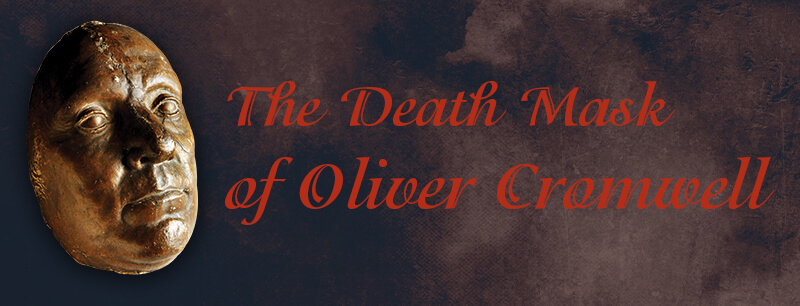
The Death Mask of Oliver Cromwell
The History of Death Masks
A death mask is a plaster or wax cast made of a person’s face following his or her death. Death masks can be mementos or used as the basis for portraits. In the 17th century, death masks were part of the effigy (a life-sized statue of the deceased, often made from wood, used as a stand-in for the body) displayed at state funerals, as was the case with Cromwell. During the 18th and 19th centuries they were also used to record the features of corpses for purposes of identification, much as photography is used today.
Death masks can be traced back more than 3,000 years ago to the ancient Egyptians, who used them to cover the faces of mummies. These masks were believed to strengthen the mummy’s spirit and to guard its soul from evil. The ancient Greeks used wax to make death masks, and the Romans saved lifelike wax death masks of their ancestors.
Cromwell’s Remains
As the Lord Protector, Cromwell was honored with an elaborate and regal funeral based on the ceremonies that had taken place at the death of King James I in 1625. Cromwell was buried on November 10, 1658, in Westminster Abbey, along with previous Kings of England.
The Restoration of King Charles II in May 1660 led to the desecration of Oliver Cromwell’s body. Cromwell’s remains were removed from Westminster Abbey, along with those of two others implicated in the execution of King Charles I, by Parliament in December 1660. After hanging the dead bodies, their heads were placed on poles on Westminster Hall as a warning to others.
Aftermath
Cromwell’s head stayed at Westminster until at least 1684, after which it disappeared. Tradition says that it was blown off in a gale, retrieved by a sentry, and hidden for many years. A private museum in London as early as 1710 claimed it and then Samuel Russell, an out-of-work actor, had the head in the early 1770’s. After Cromwell’s old college at Cambridge refused the head, Russell sold it in 1787 for £118. After passing through the hands of several owners, it finally ended up with the Wilkinson family, which owned the head into the 20th century. In the early 1930s a study was conducted that concluded the head was that of Oliver Cromwell. It was offered to Sidney Sussex College, Cambridge in 1960. The college re-buried Cromwell’s head almost 300 years after it had been exhumed from Westminster Abbey. It now rests within the ante-chapel at the College, its location unmarked.
 |
 |

